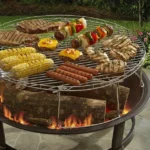In the world of architecture, interior design, and 3D visualization, Building Information Modeling (BIM) has revolutionized the way professionals conceptualize and present their projects.
A well-detailed Revit model of a kitchen rice cooker can play an essential role in creating accurate and high-quality 3D renderings for kitchen layouts.
Whether you are an architect designing a commercial kitchen, an interior designer working on a modern home, or an engineer ensuring proper appliance placement, an accurately modeled rice cooker in Revit helps bring realism and functionality to your project.
Importance of a Kitchen Rice Cooker Revit Model in BIM Projects
A Revit model of a rice cooker is more than just a visual element—it provides valuable data for space planning, energy efficiency calculations, and appliance integration. It ensures that kitchen layouts are designed with proper dimensions, clearance space, and realistic appliance placements.
Architects can use these models to demonstrate how appliances fit within cabinetry, while interior designers can experiment with aesthetic placements. Engineers, on the other hand, can analyze technical aspects such as power consumption and ventilation requirements.
Key Features of a High-Quality Rice Cooker Revit Model
-
Accurate Dimensions & Scale
A rice cooker model should be accurately scaled to represent real-world appliance sizes. This ensures seamless integration into kitchen layouts without affecting spatial planning. Standard rice cooker dimensions typically range from compact 1.5L models to larger 5L+ models used in commercial settings. -
Detailed 3D Geometry
The model should feature realistic shapes, buttons, displays, and textures that make the rice cooker appear visually appealing in 3D renderings. Proper geometry allows for both simplified and highly detailed views, depending on the level of detail (LOD) required. -
Material & Texture Mapping
A high-quality model includes accurate surface materials, such as stainless steel, plastic, or ceramic finishes, to reflect how the appliance would look in different lighting conditions. This enhances realism in rendered images. -
Parametric Design for Customization
A parametric Revit model allows users to adjust various features such as color, size, digital display options, and lid design. This adaptability makes the model useful for multiple projects and aesthetic variations. -
Family File Integration (.RFA Format)
To be fully functional within Revit, the rice cooker model should be in .RFA format and structured as a Revit family. This ensures compatibility across different versions of Autodesk Revit and allows for seamless integration into existing BIM workflows. -
LOD (Level of Detail) Optimization
The model should offer different levels of detail depending on the project’s requirements. A LOD 100-200 model is ideal for basic space planning, while a LOD 300-400 model includes detailed buttons, textures, and interactive elements for high-end presentations.
Applications of a Revit Rice Cooker Model in Design Projects
-
Residential Kitchen Design
A well-modeled rice cooker can be placed on kitchen countertops in 3D interior designs to enhance visualization. Homeowners and designers can experiment with appliance placement, ensuring a harmonious kitchen layout. -
Commercial and Restaurant Kitchen Planning
Restaurants, hotels, and catering businesses require efficient kitchen layouts. A commercial rice cooker model in Revit allows designers to test space utilization and workflow efficiency. -
Smart Home Integration
With the rise of smart appliances, a Revit model can include features such as Wi-Fi connectivity indicators and digital control panels. This helps visualize smart kitchen environments in modern home designs. -
Energy and Ventilation Analysis
Engineers can use BIM-integrated data to assess power consumption, ventilation requirements, and clearance spaces for appliances. This ensures compliance with safety and energy efficiency standards.
Downloading and Using a Rice Cooker Revit Model
To access a high-quality rice cooker Revit model, professionals can either download pre-made models from BIM object libraries or create custom models using Autodesk Revit’s family editor.
If downloading, ensure that the file is optimized for Revit 2020 and later versions for maximum compatibility. Custom modeling allows designers to tailor the rice cooker’s shape, brand, and features to match project specifications.
Conclusion
A kitchen rice cooker Revit model is an essential tool for architects, designers, and engineers who want to create realistic and functional kitchen layouts. With accurate dimensions, material textures, parametric customization, and integration into BIM workflows, it enhances the quality of 3D designs and planning.
Whether used in residential, commercial, or smart kitchen projects, a well-structured Revit model contributes to a more precise and visually compelling representation of modern kitchens.















